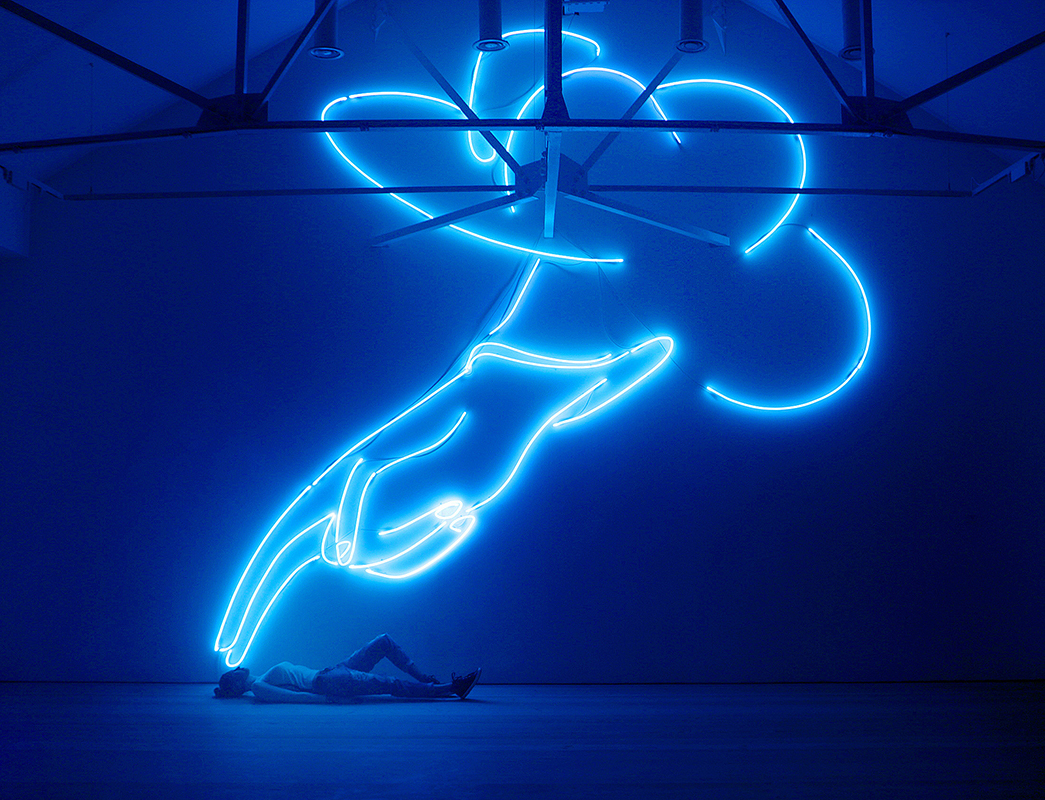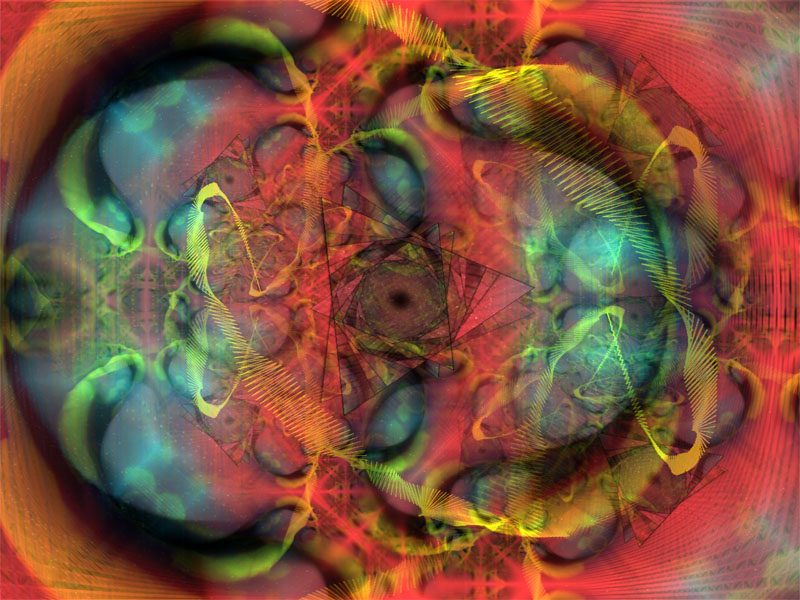|
Clavilux
Clavilux is the term coined by the artist Thomas Wilfred to refer to his mechanical invention that allowed the creation and performance of lumia, which was Wilfred's term for light art. From Latin, Clavilux means "Light played by key." Wilfred built his first Clavilux, Model A, from March to May 1919. While Wilfred intended the term to refer to any device that could be used to perform Lumia, the name Clavilux was not widely adopted by other artists working with light. As such the term is closely associated with Wilfred and his mechanical vocabulary. The only other artist known to have built a Clavilux is W. Christian Sidenius, who was an ardent admirer and later good friend of Wilfred's. Sidenius built a theatre behind his home to house his Clavilux and host Lumia recitals during the summer months. Wilfred also built sixteen smaller home Clavilux models which he also called "Clavilux Juniors." There are seven known to be extant, most of which are in private collections. Two ful ... [...More Info...] [...Related Items...] OR: [Wikipedia] [Google] [Baidu] |
Thomas Wilfred
Thomas Wilfred (June 18, 1889 in Naestved, Denmark - August 15, 1968 in Nyack, New York), born Richard Edgar Løvstrøm, was a musician and inventor. He is best known for his light art, which he named '' lumia'', and his designs for color organs called Clavilux. Wilfred was not fond of the term "color organ", and coined the word "Clavilux" from Latin meaning "light played by key". His innovative, kinetic works prefigured the advent of light art in America, and influenced subsequent generations of visual artists. Biography Wilfred's father ran a photography studio, and young Wilfred was exposed to the arts at a young age. He studied painting and poetry in Paris, and found early success as "Wilfred the Lute Player" traveling Europe and America performing minstrel songs on the archaic lute. Around 1905, Wilfred began to experiment with bits of colored glass and light sources. After moving to New York he, along with Claude Fayette Bragdon and 'Kirk' Kirkpatrick Brice cofounded a gr ... [...More Info...] [...Related Items...] OR: [Wikipedia] [Google] [Baidu] |
Color Organ
The term color organ refers to a tradition of mechanical devices built to represent sound and accompany music in a visual medium. The earliest created color organs were manual instruments based on the harpsichord design. By the 1900s they were electromechanical. In the early 20th century, a silent color organ tradition (Lumia) developed. In the 1960s and 1970s, the term "color organ" became popularly associated with electronic devices that responded to their music inputs with light shows. The term " light organ" is increasingly being used for these devices; allowing "color organ" to reassume its original meaning. History of the concept In 1590, Gregorio Comanini described an invention by the Mannerist painter Arcimboldo of a system for creating color-music, based on apparent luminosity (light-dark contrast) instead of hue. In 1725, French Jesuit monk Louis Bertrand Castel proposed the idea of ''Clavecin pour les yeux'' (''Ocular Harpsichord''). In the 1740s, German composer ... [...More Info...] [...Related Items...] OR: [Wikipedia] [Google] [Baidu] |
Lumia Art
Lumia is a form of art that uses light; originally associated with music but was later associated with painting. The term was coined by a twentieth-century artist, Thomas Wilfred. In the early twentieth century, artists began to promote colors and light together in their works. Wilfred worked towards establishing lumia as a new form of art, but the medium has yet to achieve popular recognition. Thomas Wilfred Thomas Wilfred (1889–1968) was the first artist in the United States to use light as the sole means of expression for his artwork. He consistently used colored light in his works. Wilfred was born in Denmark in 1889 and emigrated to the U.S. in 1916. Wilfred explored light and color in art as early as 1905. In 1921, Wilfred created his first portable clavilux, a machine that allowed for the creation and performance of lumia. Clavilux is a term in Latin that means "light played by key". In 1930 Wilfred founded a center for research in lumia, the Art Institute of Light. The i ... [...More Info...] [...Related Items...] OR: [Wikipedia] [Google] [Baidu] |
Light Art
Light art or The Art of Light is generally referring to a visual art form in which (physical) light is the main, if not sole medium of creation. Uses of the term differ drastically in incongruence; definitions, if existing, vary in several aspects. Since light is the medium for visual perception, this way all visual art could be considered Art of Light absurdly enough; but most pieces of art are valid and coherent without reflecting on this basic perceptual fact. Some approaches on these grounds also include into the Art of Light those forms of art where light is not any medium contributing to the artwork, but is depicted. Thus luminism may also refer to the Art of Light in the above sense, its previous usage point to painterly styles: either as an other label for the Caravaggisti in the baroque, or 19th and 20th centuries, fundamentally impressionist schools. Concerning light as a medium of art, historically the Art of Light is confined to the use of artificial light in artworks. ... [...More Info...] [...Related Items...] OR: [Wikipedia] [Google] [Baidu] |
Latin
Latin (, or , ) is a classical language belonging to the Italic branch of the Indo-European languages. Latin was originally a dialect spoken in the lower Tiber area (then known as Latium) around present-day Rome, but through the power of the Roman Republic it became the dominant language in the Italian region and subsequently throughout the Roman Empire. Even after the fall of Western Rome, Latin remained the common language of international communication, science, scholarship and academia in Europe until well into the 18th century, when other regional vernaculars (including its own descendants, the Romance languages) supplanted it in common academic and political usage, and it eventually became a dead language in the modern linguistic definition. Latin is a highly inflected language, with three distinct genders (masculine, feminine, and neuter), six or seven noun cases (nominative, accusative, genitive, dative, ablative, and vocative), five declensions, four verb conjuga ... [...More Info...] [...Related Items...] OR: [Wikipedia] [Google] [Baidu] |
Visual Music
Visual music, sometimes called colour music, refers to the creation of a visual analogue to musical form by adapting musical structures for visual composition, which can also include silent films or silent Lumia work. It also refers to methods or devices which can translate sounds or music into a related visual presentation. An expanded definition may include the translation of music to painting; this was the original definition of the term, as coined by Roger Fry in 1912 to describe the work of Wassily Kandinsky. There are a variety of definitions of visual music, particularly as the field continues to expand. In some recent writing, usually in the fine art world, visual music is often confused with or defined as synaesthesia, though historically this has never been a definition of visual music. Visual music has also been defined as a form of intermedia. Visual music also refers to systems which convert music or sound directly into visual forms, such as film, video, computer gr ... [...More Info...] [...Related Items...] OR: [Wikipedia] [Google] [Baidu] |
Music Visualization
Music visualization or music visualisation, a feature found in electronic music visualizers and media player software, generates animated imagery based on a piece of music. The imagery is usually generated and rendered in real time and in a way synchronized with the music as it is played. Visualization techniques range from simple ones (e.g., a simulation of an oscilloscope display) to elaborate ones, which often include a number of composited effects. The changes in the music's loudness and frequency spectrum are among the properties used as input to the visualization. Effective music visualization aims to attain a high degree of visual correlation between a musical track's spectral characteristics such as frequency and amplitude and the objects or components of the visual image being rendered and displayed. Definition Music visualization can be defined, in contrast to previous existing pre-generated music plus visualization combinations (as for example music videos), by its ... [...More Info...] [...Related Items...] OR: [Wikipedia] [Google] [Baidu] |
Oskar Fischinger
Oskar Wilhelm Fischinger (June 22, 1900 – January 31, 1967) was a German-American abstract animator, filmmaker, and painter, notable for creating abstract musical animation many decades before the appearance of computer graphics and music videos. He created special effects for Fritz Lang's 1929 ''Woman in the Moon'', one of the first sci-fi rocket films, and influenced Disney's ''Fantasia''. He made over 50 short films and painted around 800 canvases, many of which are in museums, galleries, and collections worldwide. Among his film works is ''Motion Painting No. 1'' (1947), which is now listed on the National Film Registry of the U.S. Library of Congress. Biography Born in Gelnhausen, near Frankfurt, Fischinger apprenticed at an organ-building firm after he finished school until the owners were drafted into World War I. The next year he worked as a draftsman in an architect's office, until he too was called to duty. However, since he was too "unhealthy", he was rejected from ... [...More Info...] [...Related Items...] OR: [Wikipedia] [Google] [Baidu] |
Mary Hallock-Greenewalt
Mary Elizabeth Hallock-Greenewalt (Sept. 8, 1871 – Nov. 27, 1950)Ancestry.com. Pennsylvania, Death Certificates, 1906-1963 atabase on-line Provo, UT, USA: Ancestry.com Operations, Inc., 2014. Original data: Pennsylvania (State). Death certificates, 1906–1963. Series 11.90 (1,905 cartons). Records of the Pennsylvania Department of Health, Record Group 11. Pennsylvania Historical and Museum Commission, Harrisburg, Pennsylvania. was an inventor and pianist who performed with the Philadelphia and Pittsburgh symphonies as a soloist. She is best known for her invention of a type of visual music she called Nourathar. Thomas Eakins painted her portrait in 1903, currently in the Roland P. Murdock Collection of the Wichita Museum of Art. Biography Mary Hallock was born in 1871 in Beirut, then in Syria Vilayet, Ottoman Empire, to Samuel Hallock and Sara Tabet. After her mother began exhibiting symptoms of mental illness, eleven-year-old Mary Hallock and her siblings were sent to liv ... [...More Info...] [...Related Items...] OR: [Wikipedia] [Google] [Baidu] |




